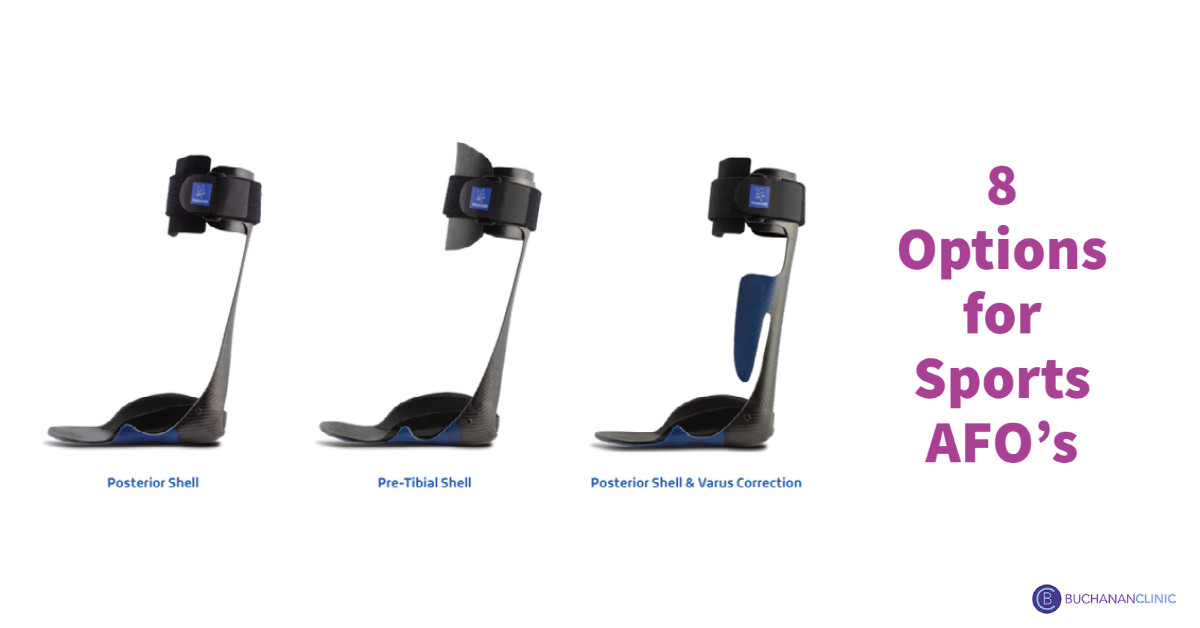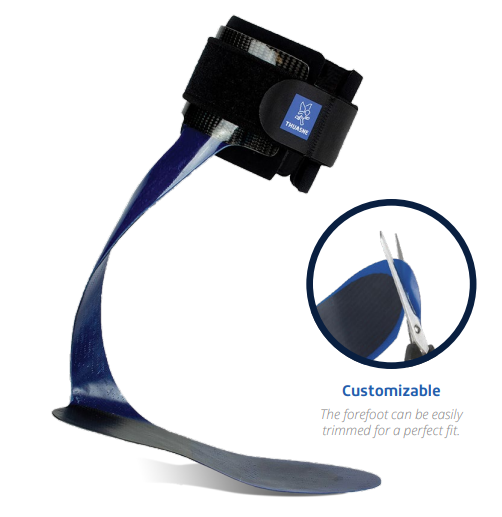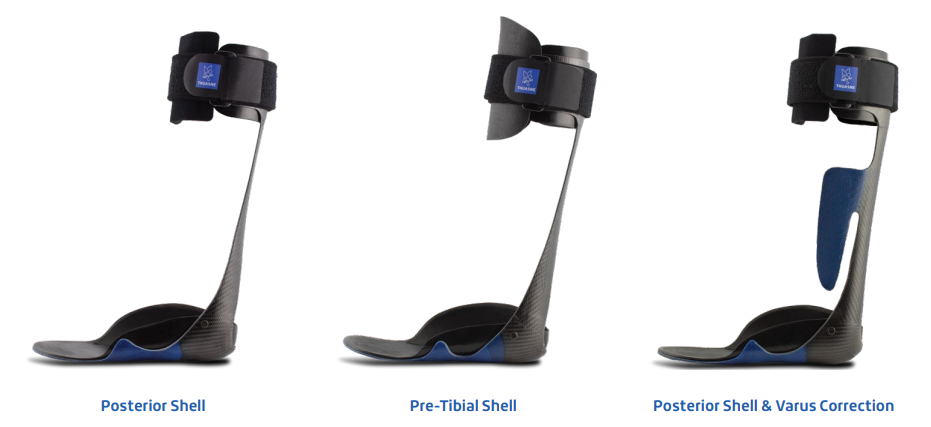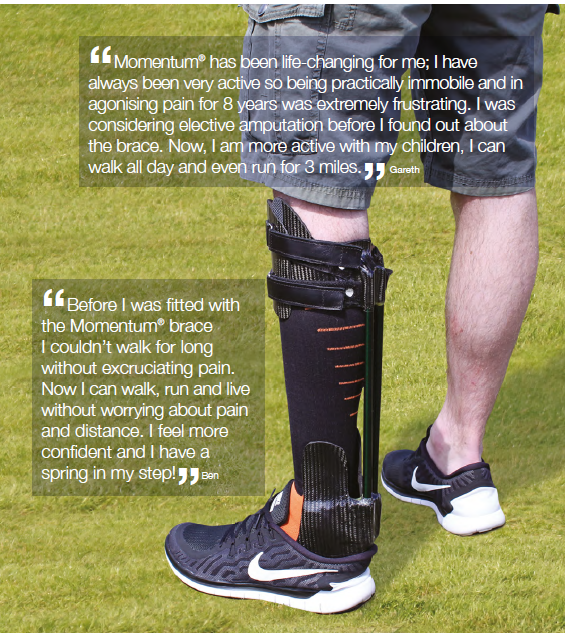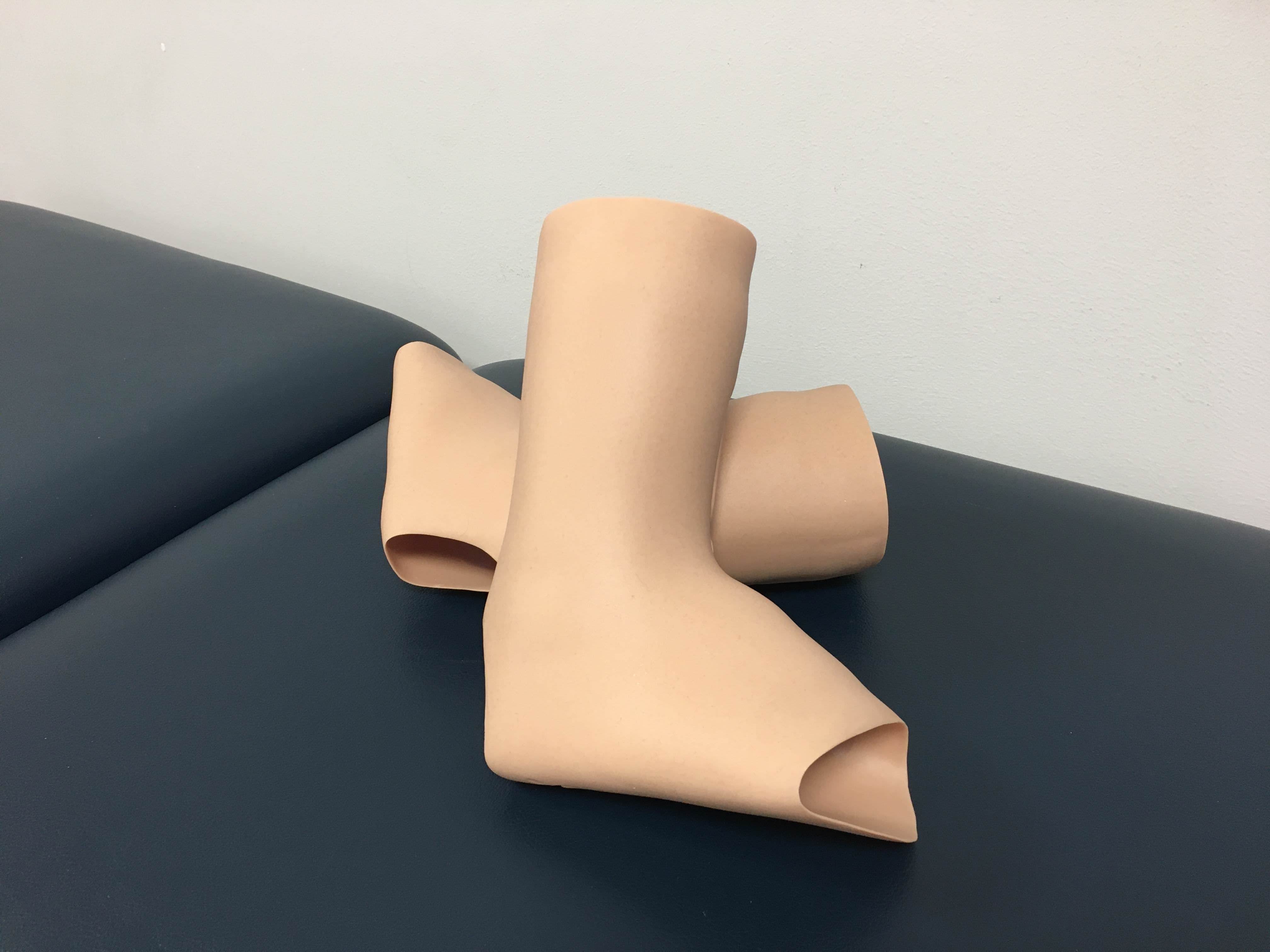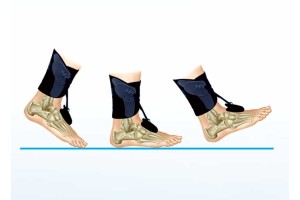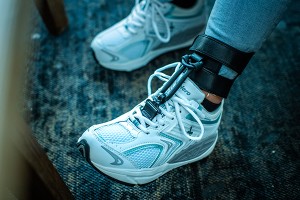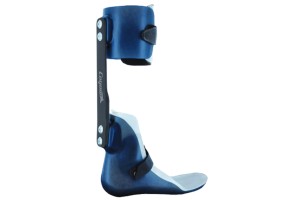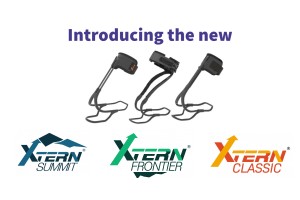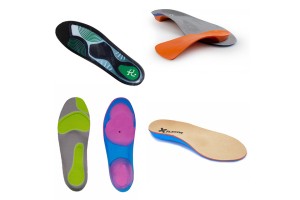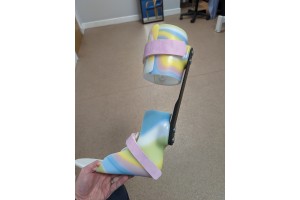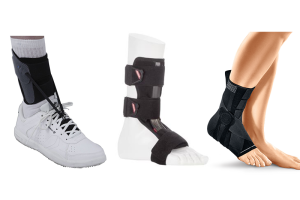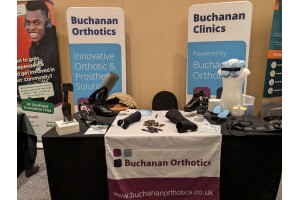Running specific Ankle Foot Orthoses (AFO)
While we are talking about running in particular the solutions will work for any sport if they are non contact.
The various options detailed below are
- Fixed Plastic Ankle Foot Orthosis (AFO)
- Hinged Plastic AFO
- Posterior Leaf plastic AFO
- Fabric devices
- Turbomed Xtern
- Stock Carbon fibre AFO
- Custom Carbon fibre AFO
- Momentum hybrid AFO
- Silicone AFOs (SAFO)
Book an Assessment
Why would you need a device for running?
There are many reasons that people require extra support to enable them to run. It could be because of weakness due to conditions such as MS or Pain due to complex trauma / Foot arthritis. Generally, the type of splint would be selected based on your aims and the functional deficit present.
Broadly speaking, we would classify the functional deficit as either anterior, just the muscles on the front of the leg that lift the foot, or complete weakness below the knee.
What is a below knee Functional deficit?
Anterior weakness is a deficit in the muscles on the front of the shin that lift the foot. Weakness in these muscles would cause a foot drop but the calf muscle is still functional.
Anterior and posterior weakness has a loss of power in the muscles at the front of the shin and the calf muscles. This leads to a foot drop and an inability to ‘push off’, causing a lack of propulsive push from that leg.
There are other patterns of weakness such which include the inverters or evertors which control the ankle and prevent you from rolling over on the ankle.
Pain from arthritis, trauma or surgery can manifest in a few ways. They often results in a decrease in range of motion either through arthritic changes or surgical fusion. Decreased range can be an issue if the motion required to run is missing as the forces through the limb will be trying to bend something that can not move. If there are arthritic changes, the movement may be painful.
The aim of any orthotic treatment would be to make up for any weakness if present, restrict painful movement or offload painful joints.
There are a number of different types of splints, and we will go through the types, when they may be suitable, and the advantages to their use. This is not exhaustive, and it is always best to check with a suitable clinician to see what may be best for you.
Book an Assessment
1)Fixed Plastic Ankle foot orthosis (AFO)
This is often seen as a standard AFO, its aims would be to immobilise the foot and ankle for either weakness in the anterior and posterior compartments of the shin or restrict movements at the foot and ankle.
Plastic devices are very forgiving and we will often see children running about with them on so running is a possibility with one. Due to the fixed nature of the ankle it is recommended that the footwear is adapted with a rocker sole to ensure smooth roll over and prevent excessive bending forces at the ankle of the device.
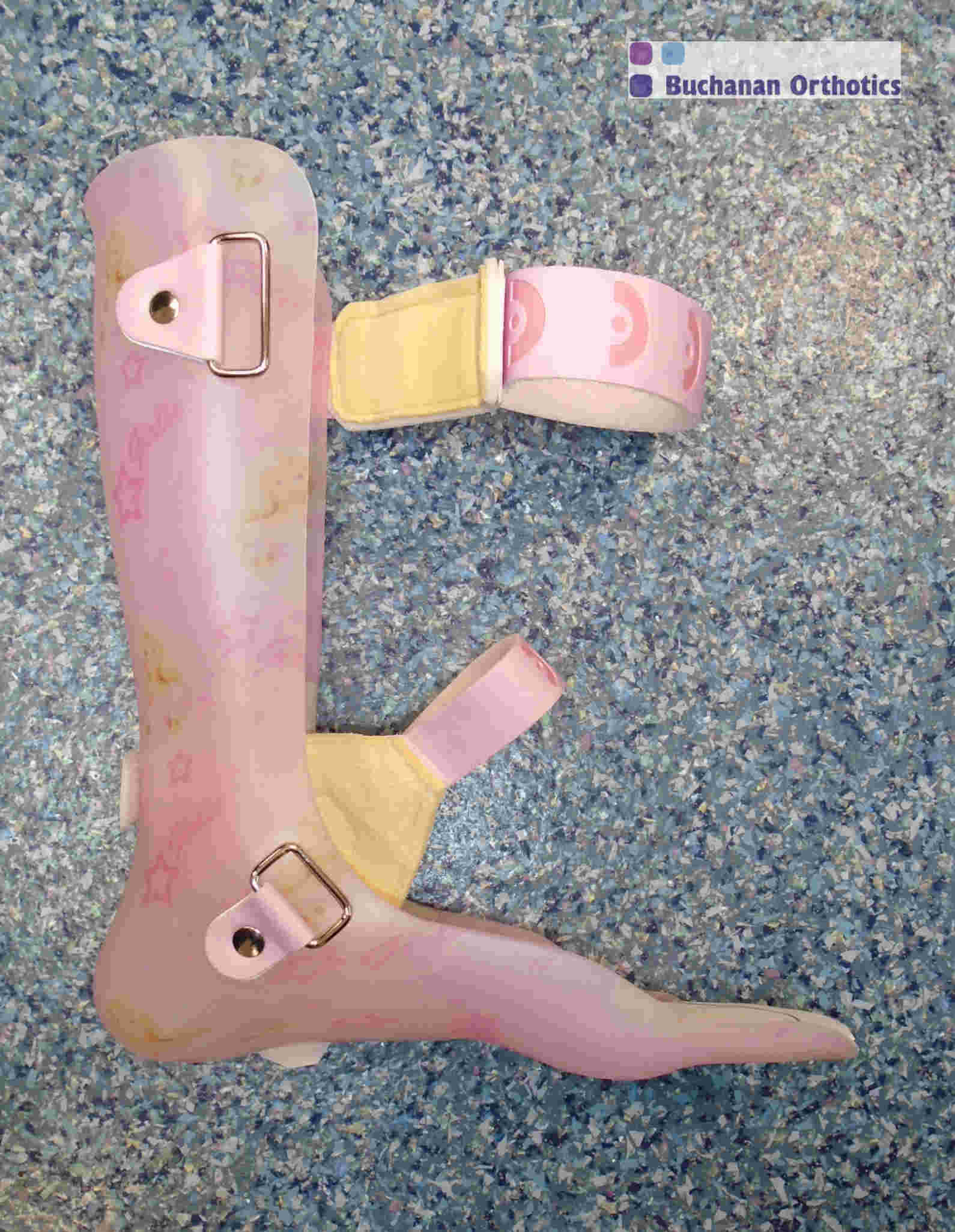
Fix Ankle Foot Orthosis
2)Hinged Plastic AFO
This style of device is similar to a fixed Plastic Ankle foot orthosis but has the addition of an ankle hinge to allow movements at the ankle. The addition of the hinge will allow some movement, and most often, it would be dorsiflexion that was allowed. This would prevent the need for a rocker sole to be adapted. The addition of a hinge, however, can come at a cost as they are prone to coming loose at the attachments, a problem that can increase when running.
3)Posterior Leaf plastic AFO
A PLS AFO is more cut back and allow movement through flex of the plastic. This style is best suited to an isolated foot drop but is probably the most suited to running due to its minimal nature. Often rather than standard plastic like polypropylene plastics such as Ortholen can be used due to its increased resistance to cyclic loading such as when running.
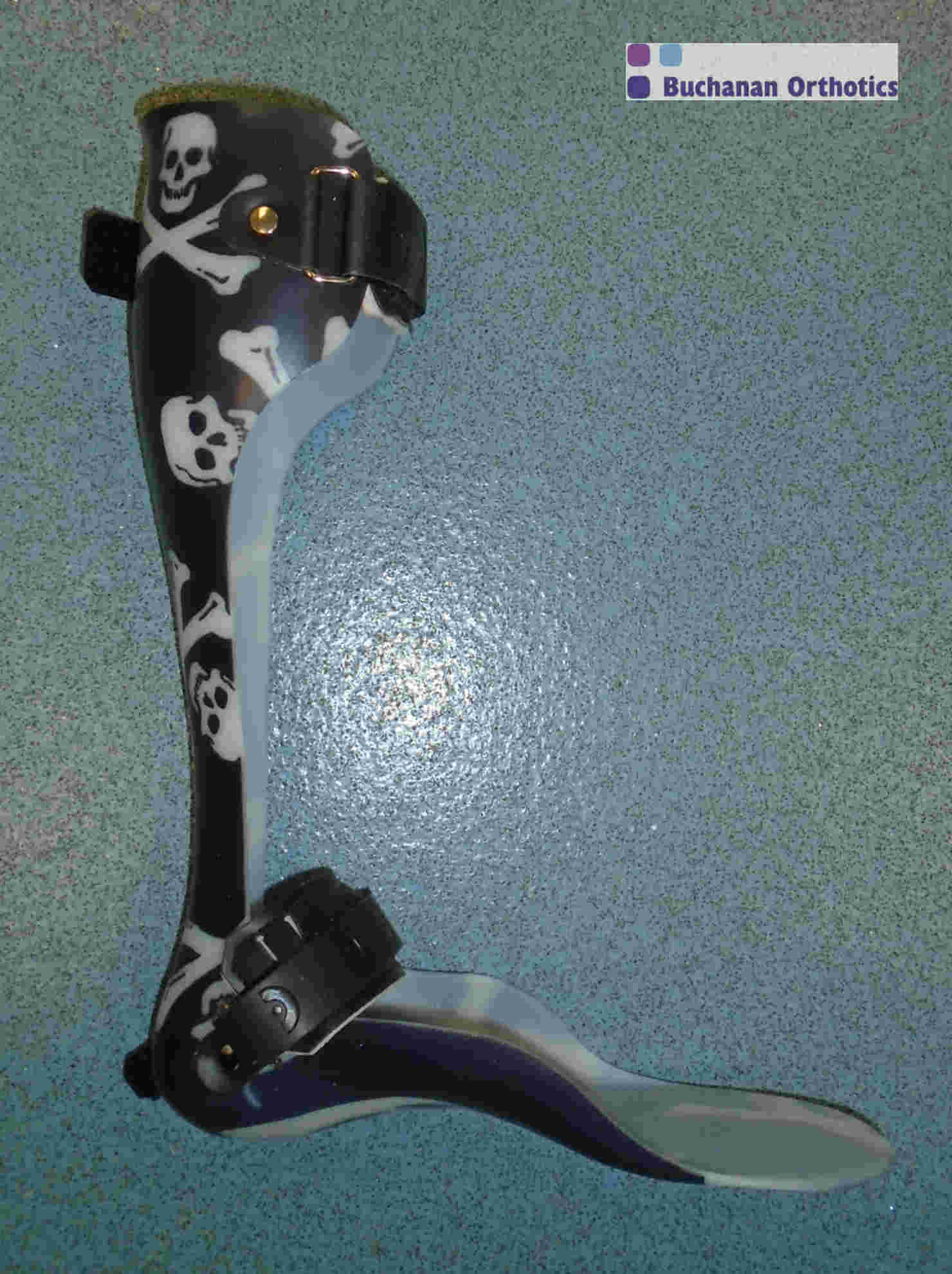
PLS style AFO in Polypropylene
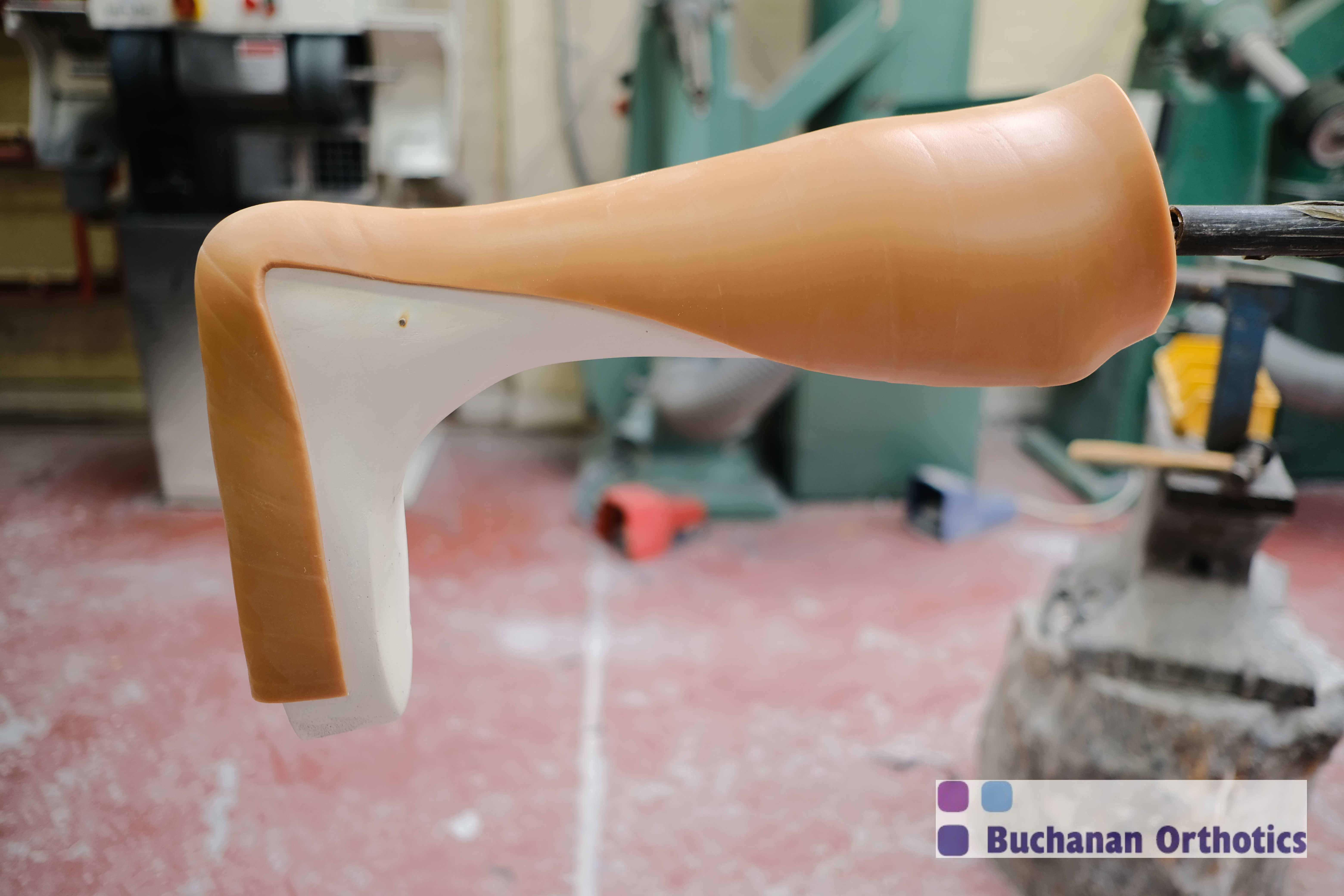
Production of an Ortholen AFO
4)Fabric devices
Fabric devices such as the prim Airmed, Neurodyn or GoOn can be worn when running and are really only suitable for people with an isolated footdrop. They may however prove to be more comfortable due to the soft nature and as they are not inside the shoe.
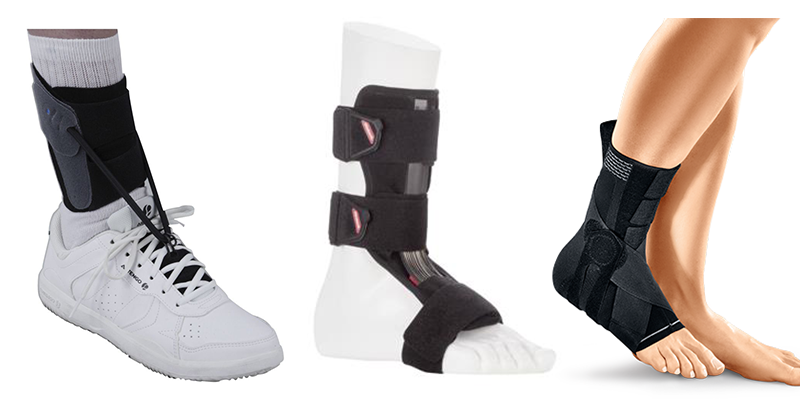
Three different fabric AFOs (Airmed, GoOn and Neurodyn)
5)Turbomed Xtern
As the Turbomed is external to the shoe it can prove to be a good option and its rugged design can withstand running well. Due to its flex it will allow a smooth roll over the foot. We have many patients who use this device when running. The only real down side to this device is it does not provide some of the energy return that carbon fibre can provide so calf strength is still required to provide push off. Also as it is external to the shoe it is not as discrete as some of the other devices.
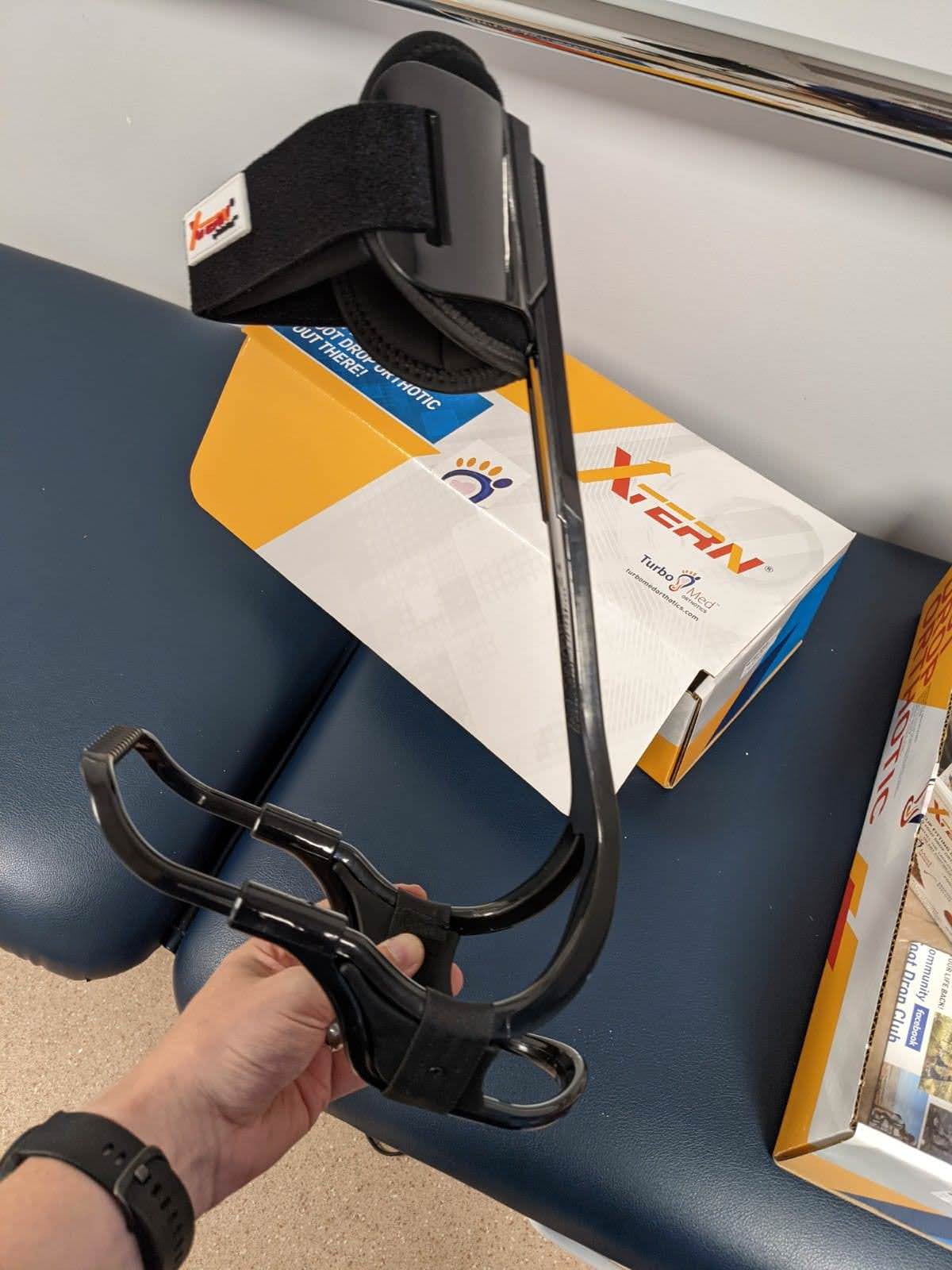
TurbomedXtern prior to attaching to a shoe
We have a full article on the Turbomed Xtern and the new Summit and Frontier that has more information on these devices.
Book an Assessment
6)Stock Carbon fibre AFO
Carbon fibre is a composite material that is strong and light. The main advantage of carbon for running is that when designed correctly it will provide some energy return and propelling the user forward.
There are numerous stock devices on the market some of which are more suitable for running than others.
Find out more about Carbon Fibre AFOs here
7)Custom Carbon fibre AFO
These are custom designed and made to plaster casts to ensure a good fit. Often they will be in a posterior lead spring design to maximise energy return and have a front shell to ensure efficient power transfer.
Carbon fibre devices are good when there is a loss of calf muscle strength as the deflexion of the carbon return some energy.
Vector Family of AFOs from Thuasne
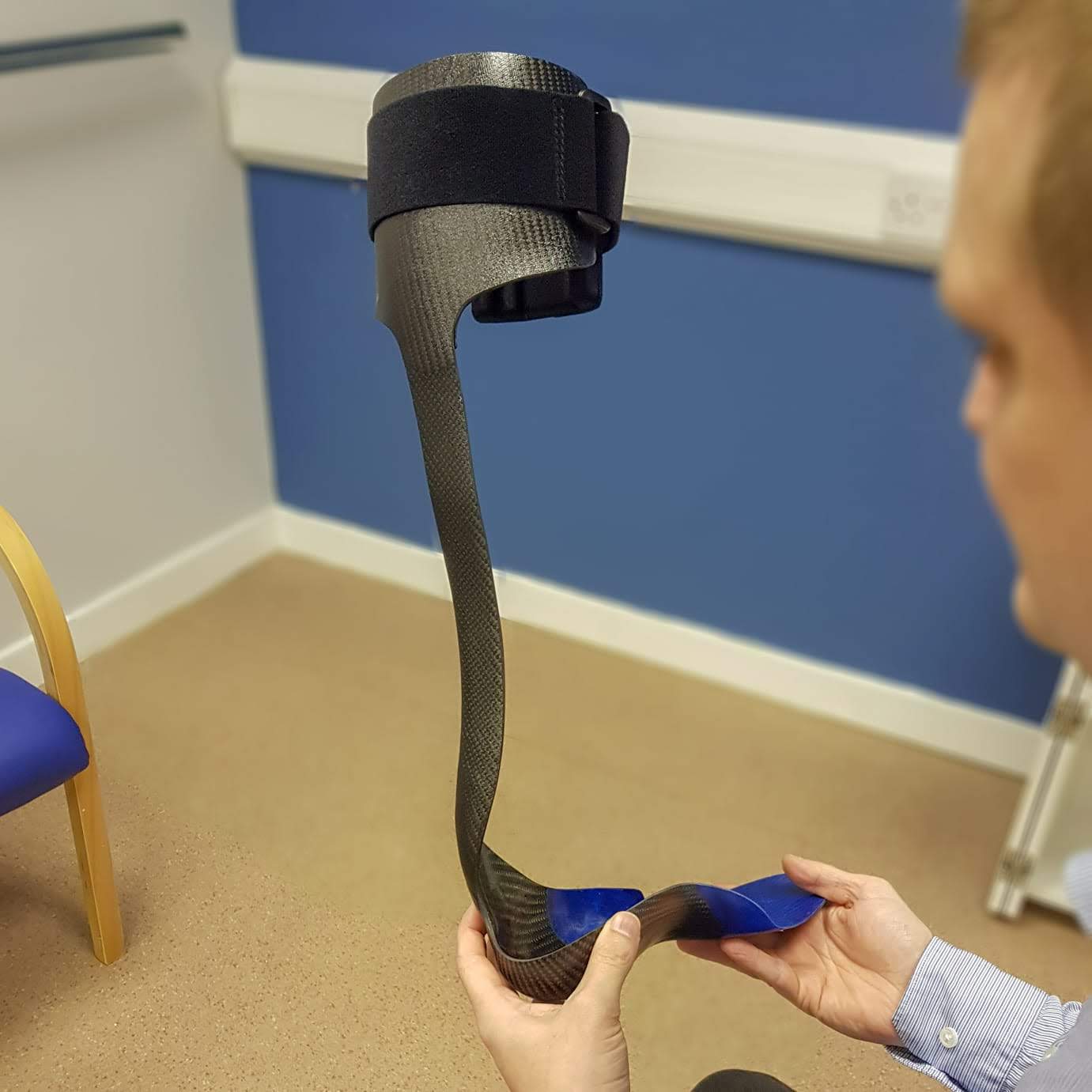
Example of a custom AFO designed for running produced by Thuasne
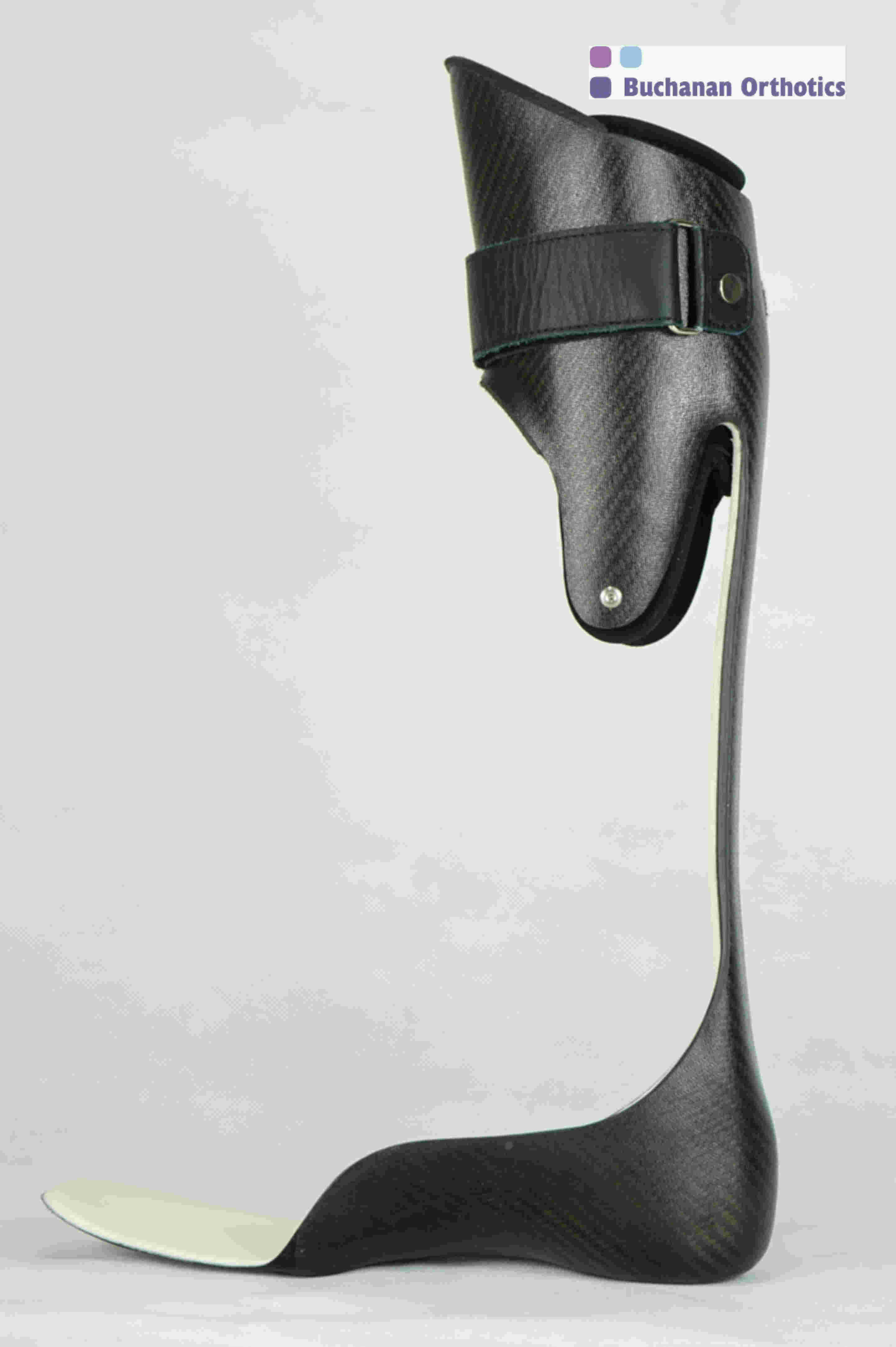
PLS Style Carbon Fibre AFO with hinging front shell produced by OttoBock UK
8)Momentum hybrid AFO
This is a specific design of a carbon device that was developed for the military and is produced by Blatchfords. It was designed to ‘offload’ painful foot and ankles to enable a return to high activity after complex trauma to the foot and ankle or limb salvage. It is also suitable to allow a return to running after surgery such as ankle fusion. It is extremely rigid however there are alternative versions using PDE struts that are also coming to the market.
Momentum AFO
Find out more about the Momentum here
9)Silicone AFOs (SAFO)
Silicone devices can be suitable for running and sporting activities to its flexible nature. It won't provide energy return such as a carbon device would so is better for people with dorsiflexor weakness / foot drop. It is also very discrete and has sport specific versions available.
A pair of Silicone Ankle Foot Orthoses
Find out more about SAFO's here
Do I need a fancy AFO to go running or play sport?
While it is not mandatory it will depend how serious you are about running or returning to sport. Running is different to walking so while a device designed for walking will work when running it would not be the optimal device. It's really about the right device for the right activity. One way to look at it is comparing a Ford focus to a Ferrari. Technically they do the same thing in getting you from A to B. The Ferrari will probably get you there quicker but you may have to leave some of your shopping at Tesco.
What can happen if I use a ‘walking’ AFO to go running?
Other than the previously mentioned differences, a device not designed to go running may be at increased risk of breakages. Running applies higher forces to a device so if that device was not designed to cope with these stresses it may break.
So does this mean a running AFO won't break?
We would never say something won't break but it should be less likely. Generally speaking the more you use something the more likely it is to break which is why a properly designed device can be important to reduce the risk of breakages.
Conclusion
This was a brief guide to running orthotics and there are even more options not mentioned. It is always best to talk to a knowledgeable clinician about all the options that would be available to you.

